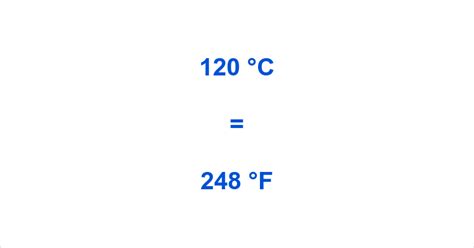What Is 120 C In F
Kalali
Mar 28, 2025 · 4 min read

Table of Contents
What is 120°C in Fahrenheit? A Comprehensive Guide to Temperature Conversions
Converting temperatures between Celsius (°C) and Fahrenheit (°F) is a common task, whether you're checking a recipe, understanding weather forecasts, or working with scientific data. This comprehensive guide will not only answer the question "What is 120°C in Fahrenheit?" but also equip you with the knowledge and tools to perform these conversions confidently and accurately. We'll explore the formulas, delve into practical applications, and discuss the significance of accurate temperature measurements across various fields.
Understanding the Celsius and Fahrenheit Scales
Before diving into the conversion, let's briefly review the two temperature scales:
-
Celsius (°C): A metric unit, widely used globally, where 0°C is the freezing point of water and 100°C is the boiling point of water at standard atmospheric pressure.
-
Fahrenheit (°F): Primarily used in the United States, where 32°F is the freezing point of water and 212°F is the boiling point of water at standard atmospheric pressure.
Calculating 120°C in Fahrenheit
The most straightforward way to convert Celsius to Fahrenheit is using the following formula:
°F = (°C × 9/5) + 32
Let's apply this formula to convert 120°C:
°F = (120°C × 9/5) + 32 = 248°F
Therefore, 120°C is equal to 248°F.
Practical Applications: Where 120°C and 248°F are Relevant
Understanding the equivalence between 120°C and 248°F is crucial in various contexts:
1. Cooking and Baking:
- Oven Temperatures: Many recipes specify oven temperatures in either Celsius or Fahrenheit. Knowing the conversion is essential for achieving the desired results. 120°C (248°F) is a relatively high temperature, often used for baking certain types of bread, roasting meats, or preparing dishes requiring a high-heat environment. Inaccurate temperature control at this level can significantly impact the outcome of your culinary creation, potentially leading to overcooked or undercooked food.
2. Industrial Processes:
- Manufacturing and Production: Many industrial processes require precise temperature control. Industries like plastics manufacturing, metalworking, and chemical processing often utilize equipment operating at temperatures around 120°C (248°F). Maintaining consistent and accurate temperature is critical for product quality, efficiency, and safety. A deviation from the target temperature can lead to defects, malfunctions, or even accidents.
3. Scientific Experiments:
- Laboratory Settings: Scientific experiments frequently involve precise temperature control. 120°C (248°F) might be relevant in experiments involving chemical reactions, material testing, or biological processes. Accurate temperature measurements are crucial for the reliability and reproducibility of scientific findings.
4. Meteorology and Weather Forecasting:
- High Temperatures: While not common in many places, areas experiencing intense heat may see air temperatures approaching 120°F (around 49°C), highlighting the importance of understanding both scales. Conversion is needed for international collaboration in meteorological data sharing and forecasting.
5. Automotive Engineering:
- Engine Temperatures: In automotive engineering, understanding engine operating temperatures in both Celsius and Fahrenheit is crucial for effective monitoring and maintenance. Overheating, often indicated by temperatures significantly higher than 120°C (248°F), can cause severe damage to engine components.
Beyond the Basic Conversion: Exploring Other Temperature Scales
While Celsius and Fahrenheit are the most common, other temperature scales exist, including:
-
Kelvin (K): The absolute temperature scale, where 0K represents absolute zero, the theoretical point at which all molecular motion ceases. Kelvin is widely used in scientific applications. To convert Celsius to Kelvin: K = °C + 273.15
-
Rankine (R): An absolute temperature scale based on Fahrenheit. To convert Fahrenheit to Rankine: R = °F + 459.67
The Importance of Accurate Temperature Measurement
Accuracy in temperature measurement is paramount across diverse fields. Inaccurate readings can have significant consequences:
-
Food Safety: Improper cooking temperatures can lead to foodborne illnesses.
-
Medical Applications: Inaccurate body temperature readings can lead to misdiagnosis and ineffective treatment.
-
Industrial Processes: Temperature deviations can compromise product quality, efficiency, and safety.
-
Scientific Research: Inaccurate temperature measurements can invalidate experimental results.
Tips for Accurate Temperature Measurement
-
Calibrate your thermometers regularly: Ensure your thermometers are providing accurate readings.
-
Use appropriate thermometers for different applications: Different thermometers are designed for different temperature ranges and applications.
-
Consider the environment: External factors such as ambient temperature can affect thermometer readings.
-
Follow manufacturer's instructions: Always refer to the manufacturer's instructions for proper use and care of your thermometer.
Troubleshooting Common Conversion Errors
When converting between Celsius and Fahrenheit, common errors include:
-
Incorrect formula application: Double-check your calculations to avoid simple mathematical errors.
-
Unit mixing: Ensure consistency in your units (Celsius or Fahrenheit).
-
Rounding errors: Be mindful of significant figures and rounding appropriately.
-
Calculator errors: Verify your calculations using a different method or calculator.
Conclusion: Mastering Temperature Conversions
Mastering temperature conversions is a valuable skill with applications across various disciplines. This guide has provided a comprehensive understanding of converting 120°C to Fahrenheit (248°F), the underlying principles, and practical applications. By understanding the formulas and paying close attention to detail, you can confidently perform these conversions and ensure accurate temperature measurements in your work or everyday life. Remember the importance of accurate measurement and using appropriate tools for reliable results. Always double-check your calculations and understand the context in which you are using these conversions. Accurate temperature measurement is crucial for safety, efficiency, and achieving desired outcomes in diverse fields.
Latest Posts
Latest Posts
-
What Tpye Of Reacgion Is Word Bank
Mar 31, 2025
-
80 Minutes Is How Many Hours
Mar 31, 2025
-
How Many Electrons Are In The Outer Shell Of Carbon
Mar 31, 2025
-
Cuanto Es 30 Grados Fahrenheit En Centigrados
Mar 31, 2025
-
2 And 5 8 As A Decimal
Mar 31, 2025
Related Post
Thank you for visiting our website which covers about What Is 120 C In F . We hope the information provided has been useful to you. Feel free to contact us if you have any questions or need further assistance. See you next time and don't miss to bookmark.
